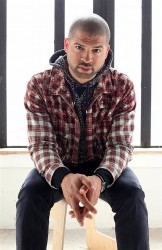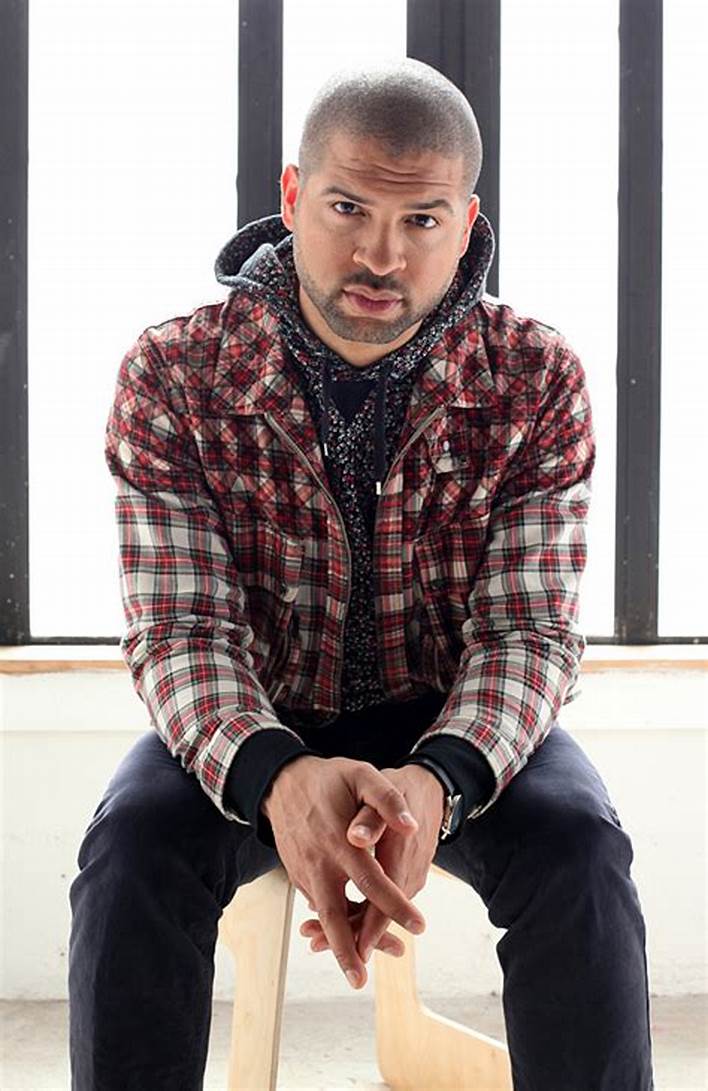 United Kingdom The Harlem Hellfighters: James Reese Europe and the Absence of Ruin: Jason Moran (piano, arranger, composer, leader), Tarus Mateen (electric bass), Nasheet Waits (drums), Ife Ogunjobi (trumpet) Joe Bristow (trombone) Hannah Mubya (bass trombone, tuba) Kaldi Akinibbi, Mebrakh Johnson, Alam Nathoo (reeds), Andy Grappy (tuba). Bradford Young (cinematographer), Film Editor (Stefani Saintonge), Still Photography (Jati Lindsay). Dora Stoutzker Hall, Royal Welsh College of Music and Drama, Cardiff. 21.10.2018. (GPu)
United Kingdom The Harlem Hellfighters: James Reese Europe and the Absence of Ruin: Jason Moran (piano, arranger, composer, leader), Tarus Mateen (electric bass), Nasheet Waits (drums), Ife Ogunjobi (trumpet) Joe Bristow (trombone) Hannah Mubya (bass trombone, tuba) Kaldi Akinibbi, Mebrakh Johnson, Alam Nathoo (reeds), Andy Grappy (tuba). Bradford Young (cinematographer), Film Editor (Stefani Saintonge), Still Photography (Jati Lindsay). Dora Stoutzker Hall, Royal Welsh College of Music and Drama, Cardiff. 21.10.2018. (GPu)

Jason Moran’s tour of his multi-media project The Harlem Hellfighters: James Reese Europe and the Absence of Ruin, stopped off in Cardiff for one of only three British performances, just ahead of a performance at the Berlin Jazz Fest.
The title of his project/programme needs to be explained briefly. Jim Europe was as a key figure in an all-black regiment (the 369th Infantry) – of which more later. This regiment landed at Brest on January 1, 1918. Their bravery led to their being nicknamed ‘Hellfighters’ by the Germans, a name they adopted / adapted as ‘The Harlem Hellfighters’. They spent 191 days under fire (more than any other American regiment) without ever yielding any territory and winning many military honours both from the Americans and the French.
Moran’s subtitle – ‘The Absence of Ruin’ – is, I think, an allusion to the book An Absence of Ruin by the Jamaican novelist and academic Orlando Patterson, with reference to the emphasis Patterson has placed on how the descendants of the slaves shipped to the Americas have been deprived of the cultural symbols/structures of their own past. Moran’s re-generation of James Reese Europe seeks to bring one such (largely forgotten) ‘symbol’ back into black (and other) consciousnesses, to make him and his work ‘present’ rather than ‘absent’.
Some biographical introduction seems appropriate. Europe was born in Mobile (Alabama) in February 1880. In 1889 the family moved to Washington D.C. where the social climate was more favourable to African Americans. There the young Europe was able to study both piano and violin with good teachers. In 1904 he followed his older brother to New York where he soon established himself as a conductor of ‘black’ musicals and other shows. A man with a well-developed social consciousness and genuine abilities as a leader, in 1910 Europe helped to establish the Clef Club, an organization designed to defend the interests of his fellow black musicians, given that at the time the New York branch of the American Federation of Musicians refused to accept black members. In 1912 Europe led a concert of African-American music at Carnegie Hall, featuring his Clef Club Symphony Orchestra (said to have been 250 strong!). In the following year he became musical director for the white dancers Vernon and Irene Castle, touring with them in the USA and Canada. He fronted bands of his on from about 1914. As the American government took the first steps towards entering World War I, a regiment made up almost entirely of African Americans (there were also a few Puerto Ricans) was formed, with Europe – who had persuaded the members of his band to sign up too – receiving a commission as a lieutenant. This regiment arrived in France on New Year’s Day of 1918. Though Europe and his musicians formed a regimental band of some considerable quality, they also played a full role in purely military terms (see above). After a few months, while active with a French patrol in no-man’s land, Europe was the victim of a German gas attack and was hospitalized. (He continued to write music in his hospital bed, as he recovered, such as his piece ‘On Patrol in No Man’s Land’). He was, however, deemed unfit for further active service. He and his band contrived to play in a number of French cities, making a very favourable impression on their audiences (including French musicians and composers; they were amongst the first to introduce syncopated ‘Black’ music to European audiences.). At the end of the war the Regiment sailed back to America arriving early in 1919 – ironically, the all-white Original Dixieland Jazz Band set sail to Europe just a few days later. Europe and his regiment were welcomed back to New York (and to Harlem in particular) in a joyous parade. Europe and his musicians soon undertook a tour of the USA. However, a trivial squabble with one of the band’s drummers, Herbert Wright, perhaps mentally unstable after his experiences in the trenches, led to Europe being stabbed and to his death soon afterwards on May 9, 1919. He was one of the first African Americans to be granted a public funeral; he was buried with full military honours in Arlington National Cemetery. (Much more on Europe’s life and work can be found in F. Reid Badger’s pioneering A Life in Ragtime: A Biography of James Reese Europe, OUP, 1995).
What of Europe’s music itself? To judge by the recordings we have (and we have to remember that the early recording equipment used can hardly have presented a true sound picture of the music) it seems to have been closer to a kind of orchestral ragtime than to anything we would now identify as jazz. The music was, we know, tightly scored with no improvised solos (though the members of his band were good ‘readers’, Europe insisted on their playing without music in front of them). But in several respects it ‘anticipated’ later jazz – as in its use of instrumental ‘smears’ and the like, and in its excitingly syncopated rhythms). Alex Ross (in The Rest is Noise) declared Europe’s music to be just ‘a step or two away from jazz’ and several writers have described it as ‘proto jazz’. The sense that Europe’s music was a harbinger of significant developments in American music seems to have been felt by some, at least, at the time. On the occasion of Europe’s death an unnamed writer in The New York Times told the newspaper’s readers: ‘Those who think that contemporary ragtime, however imperfect a stage in the evolution of a different sort of music which may eventually possess considerable merit … will regret the untimely death of a man who ranked as one of the greatest ragtime conductors, perhaps the greatest, we have had. Ragtime may be negro music, but it is American negro music, more alive than much other American music and Europe was one of the Americans who was contributing most to its development’.
It is one of the qualities of any art form that it should bring new life and insights to its own past and not seek to live merely in a kind of ‘perpetual present’ – think of Stravinsky reworking Pergolesi, Busoni producing his versions of Bach for a different age (and a different instrument), Pugin creating his Victorian variations on Gothic architecture or Picasso repeatedly reworking images by Velazquez or, indeed, the seemingly endless flow of translations / adaptations of poems by Horace, Virgil and Catullus from the Renaissance onwards. Jazz has, in recent decades, taken up a related kind of renewal of its own past, but to my mind at least, too much such work has been excessively respectful of the letter rather than the spirit of the original music, settling for accomplished reproduction rather than re-invention or re-imagining.
Moran, on the other hand, undertakes something far more radical. Theme statements of some of the tunes Europe recorded (some, but not all, composed by him) morph into longer passages in later styles of jazz, whether played by the ensemble as a whole or as improvised solos, doing so with such seeming naturalness that the process makes a strong case for the presence in Europe’s music of the ‘seeds’ of a great deal of subsequent jazz. The concert, supplemented by projected images and snippets of film, lasted almost 90 minutes, almost without pause or break. With the images and the varied and sometimes challenging music, one was sometimes in danger of succumbing to as kind of sensory overload. But the echoes of the big bands of, say, Fletcher Henderson and Duke Ellington (one of the old photographs projected was of Ellington – who also grew up in Washington, of course – paying his respects at Europe’s grave), or of pianists such as Eubie Blake and Luckey Roberts, both of them clearly influenced by Europe spoke volumes about some of the adjustments which ought to be made to our standard histories of jazz. Blake is reported to have said of Europe: ‘He was our benefactor and inspiration. Even more, he was the Martin Luther King of music’, while Luckey Roberts apparently told Randy Weston (one of the modern jazzmen to have taken an interest in Europe’s music before Moran) in the 1940s that ‘we older musicians left you younger musicians very little because when James Reese Europe died we died’.
Between 2010 and 2018 Weston and his African Rhythms Octet gave a series of concerts in celebration of Europe and his music. In Moran’s Picasso-esque reinvention of Europe’s music one heard echoes of, to name but a few, Thelonious Monk, Mary Lou Williams, McCoy Tyner, Freddie Hubbard and Albert Ayler. Moran wasn’t, I imagine, claiming any kind of direct influence by Europe on all these (and other) figures, but exploring some of the ways in which Europe’s legacy has indirectly grown and been developed, his ‘proto jazz’ turned into jazz proper.
Throughout the concert Moran’s regular trio (with Tarus Mateen and Nasheet Waits), sometimes called ‘The Bandwagon’, was at the heart of the proceedings, supplemented by a septet of seven British musicians, six of them young instrumentalists chosen by Gary Crosby (of ‘Tomorrow’s Warriors’), who all acquitted themselves well. They picked up and responded to Moran’s guidance as he ‘conducted’ from the piano, and occasionally as he shuffled Thelonious-Monk-like around the stage, and they blew some very impressive solos when called upon. Moran himself was the dominant soloist, as one might expect, and most of what he did was deeply impressive, polystylistic inventions which always respected Europe’s desire to present this music with ‘dignity’. Moran’s interaction with the quite brilliant drummer Nasheet Waits would, of itself, have been more than enough to justify attendance at the concert. All three of the young British reed players contributed eloquent and expressive solos and trumpeter Ife Ogunjobi impressed with some adventurous playing.
The one ‘veteran’ amongst the supplementary musicians was tuba player Andy Grappy, seen and heard in many different musical contexts around Britain and beyond for a good few years (how many other musicians have worked with Andrew Hill, Sam Rivers and the LSO ?). He ensured that the band had a firm brass sound at the core of its rhythms (as Europe’s bands did). But Grappy also made a contribution to Moran’s project that went beyond his own playing. Ahead of each British performance Grappy worked with young local musicians to get them playing Europe’s music. As a result, before Moran’s concert those sitting in the main foyer of the Welsh College of Music were treated to a short performance of some of Europe’s music in arrangements specially prepared by Grappy, given by an ad hoc orchestra (some 25 strong) made up of a core of young musicians from Cardiff Youth Jazz Orchestra, supplemented by students from the College. The music was crisply played and was an effective demonstration of just how vivid Europe’s music sounds heard live. Apart from being enjoyable in itself, this brief concert was good preparation for the evening’s ‘main event’, refamiliarizing us with the materials which Moran was to reinvent.
Glyn Pursglove
